Why Leave Management System is Important in Any Organisation?
Effective management of employee leave has become critical to the smooth operation of firms in today’s competitive work environment.
A Leave Management System plays a pivotal role in ensuring that leave processes are streamlined, transparent, and compliant with regulations. Let’s delve into why implementing an LMS is crucial for any organization’s success.
Why Leave Management System?
The complex procedure of managing employee leave is simplified and automated by leave management software, which replaces digital paperwork for manual tasks. HR staff can save a significant amount of time by automating processes like leave requests, approvals, and monitoring. it saves valuable time for HR professionals and ensures accuracy in leave tracking and compliance with labour regulations.
Additionally, it enhances transparency and communication by providing self-service access to leave information for employees and facilitating seamless communication with managers. With customizable features, scalability, and support for remote work, leave management software meets the evolving needs of businesses, driving employee satisfaction and organizational success.
What Does a Leave Management System Do?
1. Leave Requests Management:
Employees can submit leave requests conveniently through the system, eliminating the need for manual paperwork or email requests.
They can specify the type of leave they’re requesting, such as vacation, sick leave, or maternity/paternity leave.
The system captures essential details including the duration of the leave and the reason for the absence, ensuring clarity and consistency in leave requests.
2. Leave Balances Tracking:
The system maintains accurate records of employees’ leave balances, including accrued vacation time, sick leave, and other types of leave.
Employees can easily view their remaining leave balances, helping them plan their time off effectively and reducing misunderstandings about available leave.
3. Leave Approval Workflow:
Once a leave request is submitted, it goes through an automated approval workflow based on predefined rules and hierarchies.
Managers receive notifications of pending leave requests and can review and approve them directly within the system.
This streamlined approval process ensures that leave requests are processed promptly and consistently across the organization.
4. Calendar Integration:
Leave Management System often integrate with employee calendars, allowing for easy visualization of approved leave periods.
Managers and team members can view the leave status of their colleagues directly within their calendars, facilitating better planning and coordination of workloads.
5. Compliance Monitoring:
The system helps ensure compliance with company policies and regulatory requirements related to leave management.
It automatically enforces rules regarding leave accrual, usage limits, and eligibility criteria, reducing the risk of errors and non-compliance.
6. Reporting and Analytics:
Leave Management Systems offer robust reporting and analytics capabilities, allowing HR professionals to gain insights into leave trends and patterns.
They can generate reports on metrics such as leave utilization rates, absenteeism trends, and employee time-off patterns, enabling data-driven decision-making and resource planning
What are the Features of Leave Management System?
Below are the Top features of Leave Management system.
Employee Self-Service Portal: The Employee Self-Service Portal enables employees to manage various aspects of their employment conveniently. Through the portal, employees can request leaves, review their remaining leave balances, and track the status of comp off approvals.
Additionally, they have the capability to update their personal information, ensuring accuracy and efficiency in record-keeping. This platform streamlines administrative tasks, empowering employees to take control of their work-life balance and personnel data. With easy access and user-friendly interfaces, the portal enhances organizational efficiency and employee satisfaction.
Leave Requests: Employees can conveniently submit requests for various types of leave, including vacation, sick leave, and maternity/paternity leave. They have the option to specify the dates and reasons for their intended time off. This streamlined process ensures efficient management of employee absences while maintaining transparency and accountability.
With clear guidelines in place, both employees and managers can navigate leave requests smoothly, promoting a balanced work-life dynamic within the organization.
Leave approval workflow: The system maintains a transparent record of all leave requests and their statuses, providing accountability and traceability. Managers may also have the option to delegate approval authority to specific team members in their absence. Furthermore, the workflow can be customized to accommodate different types of leave and varying approval hierarchies within the organization. Real-time tracking features enable managers to monitor overall leave usage and plan staffing accordingly.
Leave Balances and Accruals: Employees can easily access their leave balances through the system, promoting transparency and self-service. Accrual calculations are automated, reducing administrative burden and minimizing errors.
The system can accommodate various accrual rates based on factors such as tenure or employment status. Additionally, it provides alerts when employees approach or exceed their allotted leave balances, aiding in proactive leave management.
Customizable Leave Policies: Administrators have the flexibility to tailor leave policies to align with the organization’s specific needs and regulations. This includes setting parameters for accrual rates, maximum carryover limits, and blackout periods during busy seasons. Furthermore, they can establish different policies for various employee groups or departments to accommodate diverse workforce requirements.
The system allows for easy adjustments to policies as company needs evolve or regulatory changes occur. Detailed reporting features provide insights into leave policy utilization and compliance, facilitating informed decision-making. Ultimately, this customizable approach empowers administrators to create a leave management framework that optimally supports both employees and organizational objectives.
Challenges in Leave Management System
Complex Leave Policies: Organizations often have complex leave policies with different types of leave (e.g., sick leave, vacation leave, maternity/paternity leave) and varying eligibility criteria. Implementing these policies accurately within the system can be challenging.
Integration with HR Systems: Leave management systems need to integrate seamlessly with other HR systems such as payroll, attendance tracking, and employee databases. Ensuring smooth data flow between these systems can be a challenge, especially if they are from different vendors or built on different platforms.
User Adoption: Resistance to change or reluctance to use new technology can hinder the adoption of leave management systems. Proper training and communication strategies are needed to encourage employees to use the system effectively.
Accurate Tracking: Ensuring accurate tracking of leave balances, accruals, and usage is crucial for compliance and payroll purposes. Any discrepancies can lead to errors in payroll processing or violations of labour laws.
Customization and Scalability: Organizations have diverse needs, and a one-size-fits-all approach may not work for everyone. Providing customization options while maintaining scalability can be challenging for leave management system providers.
Security and Data Privacy: Leave management systems store sensitive employee data, including personal information and leave records. Ensuring data security and compliance with data privacy regulations (such as GDPR or CCPA) is essential but challenging, especially with the increasing threat of cyber-attacks.
Conclusion:
You must have understood by now that there are many benefits to implementing a Leave Management System, and one of the most important is that it can help improve your overall workforce management and organizational efficiency. HR365 offers a comprehensive Leave Management System with various features tailored to your needs. Contact us today to book 14days free trail!
About HR365
HR365 leads and serves the industry in application development with focus on Power Apps, Microsoft Teams Apps, SharePoint Apps, Intranet branding, legacy app migration, and has out of box ready to deploy such as Employee Directory 365, Employee Onboarding 365, Helpdesk 365, Contract Management 365, Asset Management 365, Performance Management 365, Timesheet 365, Expense Tracker 365, Time Off Manager 365, and Custom Application. HR365 can help you in Integrate SharePoint Web Part in MS Teams in case you need any assistance.
Schedule a free personalized 1:1 demo
By proceeding, you accept Cubic Logics’s terms and conditions and privacy policy






Try It Free, No Obligation
By proceeding, you accept Cubic Logics’s terms and conditions and privacy policy






Request for the Custom Price
By proceeding, you accept Cubic Logics Terms and Conditions and Privacy Policy
Request of the Free License
By proceeding, you accept Cubic Logics Terms and Conditions and Privacy Policy
Offer is expiring soon!
Fill in your details below to receive your personalized coupon code.
Schedule a free personalized 1:1 demo
By proceeding, you accept Cubic Logics’s terms and conditions and privacy policy






Start Your Free Experience
By proceeding, you accept Cubic Logics’s terms and conditions and privacy policy






